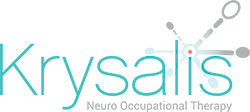The mystery of mindfulness
The mystery of mindfulness
Researchers at Cambridge University have been trying to solve a mystery surrounding a centuries-old well-being practice.
Does mindfulness - which dates back around 2,500 years to Buddhist philosophy - really help to ease mental health difficulties?
And if it does, of equal importance to meet the diverse needs of 21st Century populations, is it successful when provided in different community settings?
As the study findings are revealed this month, our Neuro OT Anna Finlay shares some of the many ways mindfulness has impacted her clients' lives.
The researchers' results
The effectiveness of 13 trials of mindfulness-based programmes (MBPs) was analysed by the Cambridge University research team [1].
MBPs aim to reduce stress, improve well-being, and increase resilience levels, often using a therapeutic combination of self-awareness, psychology, and meditation.
The MBPs in the Cambridge study included group-based and teacher-led courses provided in person and in community settings.
Using data from the 2,371 adults involved in the trials, the self-reported results of those who took part in the MBPs (around half of them) were compared with those who didn't.
And one of the findings, published in the journal, Nature Mental Health [2], was that adults who had voluntarily completed the in-person MBPs were less likely to experience symptoms of anxiety and depression.
Moreover, the MBP participants experienced these mental health improvements for at least six months after their course finished.
 This study is the highest quality confirmation so far that the in-person mindfulness courses typically offered in the community do actually work for the average person.
This study is the highest quality confirmation so far that the in-person mindfulness courses typically offered in the community do actually work for the average person. 
Lead researcher, Dr Julieta Galante [1]
Significantly, the researchers also found that a person's opinions on mindfulness did not change the MBPs' effectiveness. Nor did their age, gender, educational level, or psychological stress.
However, lead researcher, Dr Julieta Galante cautioned mindfulness "just doesn't work for some people" and had not been shown to be better than other well-being practices.
But, she added, "If you are offered an in-person, four or eight-week mindfulness course in a group setting with a teacher, and you are curious about it, I'd say, based on this study, just go ahead and try it."
Our OT's observations
What is mindfulness? In the Cambridge study, the typical MBP definition of mindfulness is cited as:
"The awareness that emerges through paying attention on purpose, in the present moment, and nonjudgmentally to the unfolding of experience, moment by moment."
In its therapeutic use, mindfulness can help people to understand and accept how they are feeling, their way of thinking, and their body sensations.
It can help to calm emotions, fine-tune physical and cognitive processes, and improve sleep.
And, as our Neuro OT, Anna Finlay, attests, its positive effects can be felt by people with a wide range of neuro conditions...
Multiple Sclerosis
Mindful breathing exercises helped to manage symptoms caused by multiple sclerosis (MS).
"It helped to calm my client's cognitive overload and 'anxiety chatter' and build in quality rest into their routines," Anna said.
"This was done while sitting in the garden. It helped my client to rest their mind and body – reducing anxiety and fatigue."
Stroke – sleep aid
The mindfulness app, Headspace [3], helped to improve sleep after a stroke.
Plus, Anna said, "Mindful walking in the park and 10-minute sessions of quiet, quality, restful sitting eased cognitive fatigue and helped my client to pace and grade their balance of activity and rest."
Listening to classical music also helped with mindful daytime rest.
Anna said, "Using classical music for 10-minute rest periods during the day helps with vibrational frequency on the vagus nerve to calm anxiety and aid memory.
"Vibration of the vagus nerve helps to lower blood pressure and reduce heart rate to reduce anxiety and feelings of fight or flight."
Stroke – movement aid
Mindfulness approaches improved outcomes when golf was used as a movement rehabilitation strategy for hemiplegia caused by stroke.
"We looked at calming emotions and breathing to allow more quality movement for putting," Anna said.
"My client did mindful mental rehearsal for movement in golf, along with body scan meditations to help them connect with muscle movement and sensory feedback.
"They took golf rehab sessions regularly and practised putting at home on a simulator.
 The increase in the normal range of movement on their affected side was very good, and my client was calmer and more connected to their balance and movement.
The increase in the normal range of movement on their affected side was very good, and my client was calmer and more connected to their balance and movement. 
Brain tumour
Mindful nature observations helped to ease cognitive symptoms caused by a brain tumour.
"Using sight, hearing, smell, touch, and temperature sense while my client was sitting in the garden helped rest cognitive fatigue and overload," Anna said.
"Encouraging my client to focus on certain sensory processes and link in with mindful breathing helps to rest their higher-level cognitive functions and connect with the earth and nature.
"This reduces anxiety, increases feelings of rest and calm and makes thinking processes clearer."
Further reading
 Learning mindfulness techniques can help to calm the brain long enough to create a pause. We can focus on one thing within this space and stick with it.
Learning mindfulness techniques can help to calm the brain long enough to create a pause. We can focus on one thing within this space and stick with it. 
Find out how mindfulness helps Krysalis blogger, Anne Ricketts manage daily life after her brain injury: Focusing on the essentials after brain injury
Mindfulness can play an important part in helping people with multiple sclerosis: MS Awareness Week 2023 - The Magnificent 7







